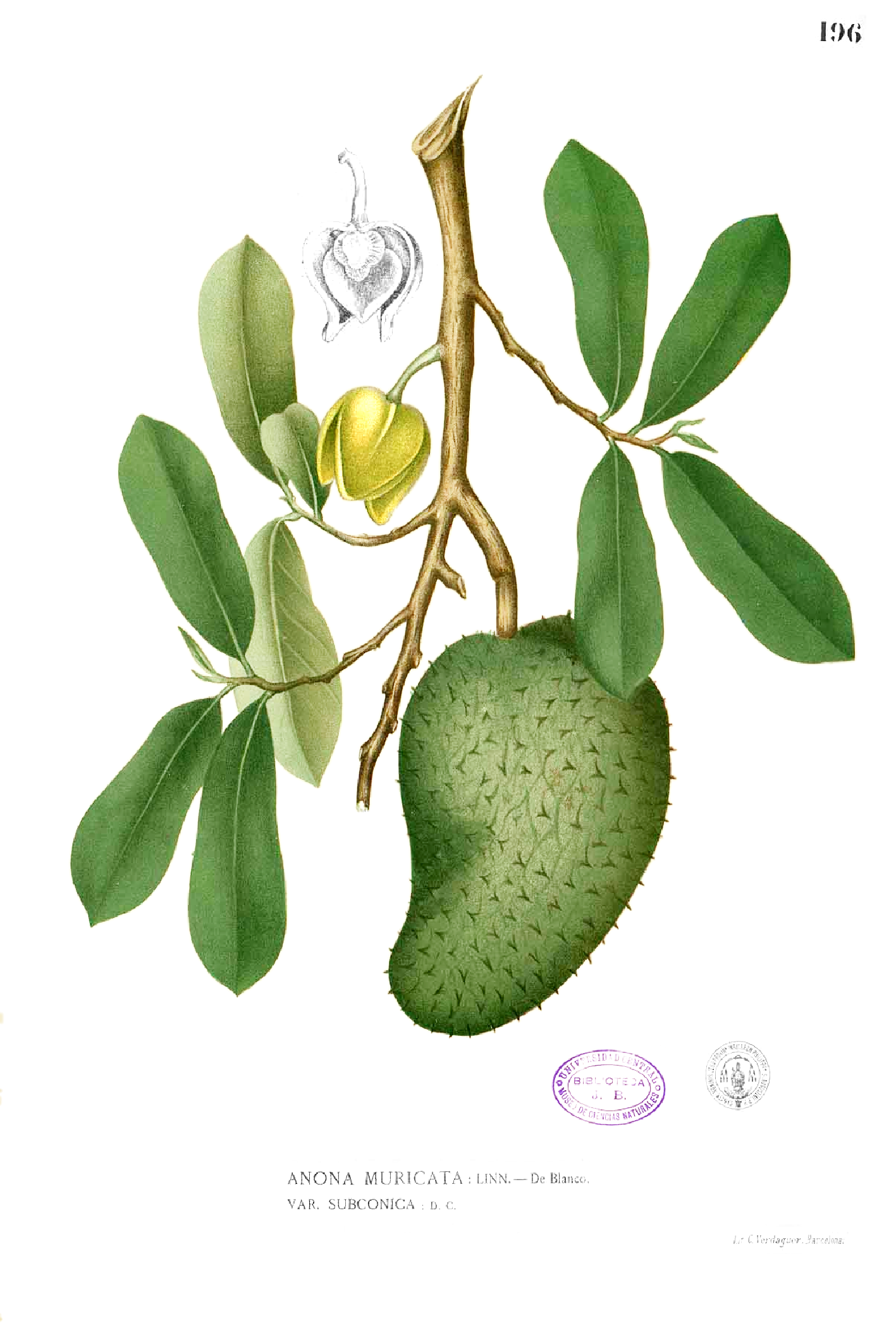Dies ist eine alte Version des Dokuments!
Annona muricata L. - Annonaceae - soursop, Guanábana, Graviola (port.), Stachelannone, Sauersack
Evergreen tree, up to 4(-10)m high, probable native to the West Indies, widely naturalized and cultivated in tropics.
„The fruit is usually called soursop due to its slightly acidic taste when ripe.“ http://en.wikipedia.org/wiki/Annona_muricata
„The fruit, soursop, is the largest among Annona species. It is eaten raw, used in sherbets, and used in drinks. The pulp is also consumed with wine or cognac.“ http://www.efloras.org/florataxon.aspx?flora_id=2&taxon_id=200008507
„The volatile compounds in soursop (Annona muricata L.) were obtained by a liquid-liquid continuous extraction procedure from the aqueous solution of blended soursop pulp and analyzed by gas chromatography (GC) and GC-mass spectrometry (MS). Twelve volatiles were identified by comparing their mass spectra and Kovats retention indexes with those of standard compounds: five were identified tentatively from MS data only, eight are being reported for the first time. (Z)-3-hexen-1-ol was the main volatile present in mature-green fruit, while methyl (E)-2-hexenoate, methyl (E)-2-butenoate, methyl butanoate, and methyl hexanoate were the four main volatiles present in ripe fruit. Concentrations of these five volatiles decreased and several other unidentified volatiles appeared when the fruit became overripe.“
[Identifying volatiles in soursop and comparing their changing profiles during ripening., Iwaoka, Wayne T., et al., HortScience Vol.28(8), 1993, 817-819]
„The essential oil of the exotic fresh fruit (pulp) Annona muricata (Annonaceae) from Cameroon was investigated by gas chromatographic/spectroscopic (GC/FID and GC/MS) and olfactoric methods to identify those constituents responsible for the intense and characteristic odor of this local foodstuff. Esters of aliphatic acids are especially dominating (total amount ∼51%), with 2-hexenoic acid methyl ester (23.9%), 2-hexenoic acid ethyl ester (8.6%), 2-octenoic acid methyl ester (5.4%), and 2-butenoic acid methyl ester (2.4%) as main compounds. Additional mono- and sesquiterpenes such as β-caryophyllene (12.7%), 1,8-cineole (9.9%), linalool (7.8%), α-terpineol (2.8%), linalyl propionate (2.2%), and calarene (2.2%) are highly concentrated in the essential oil of the fresh fruit of A. muricata. The use of this essential oil exhibiting a very pleasant odor in flavoring is discussed.“
[Essential oil compounds of the Annona muricata fresh fruit pulp from Cameroon., Jirovetz, L., Buchbauer, G., Ngassoum, M. B., Journal of Agricultural and Food Chemistry, Vol.46(9), 1998, 3719-3720]

